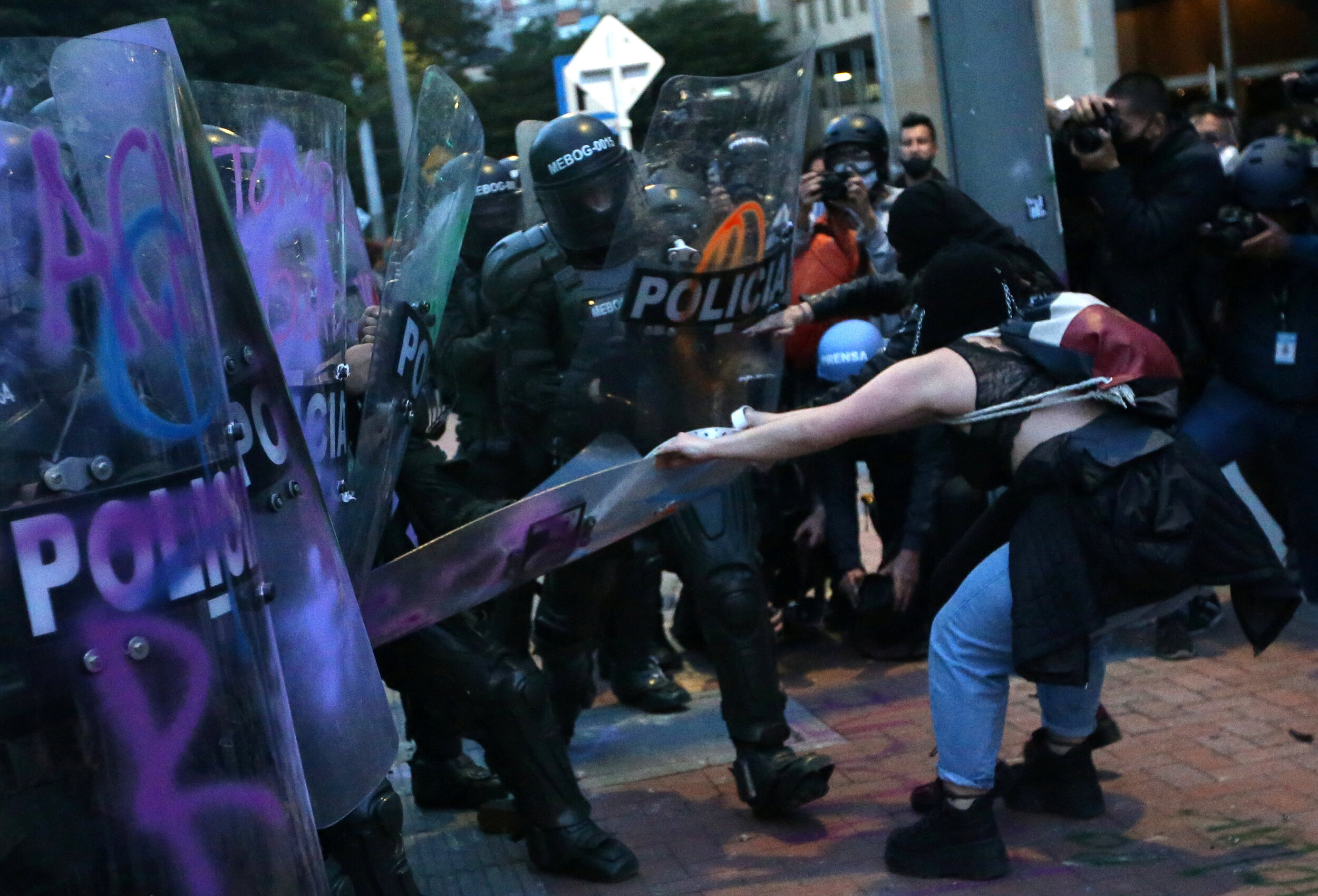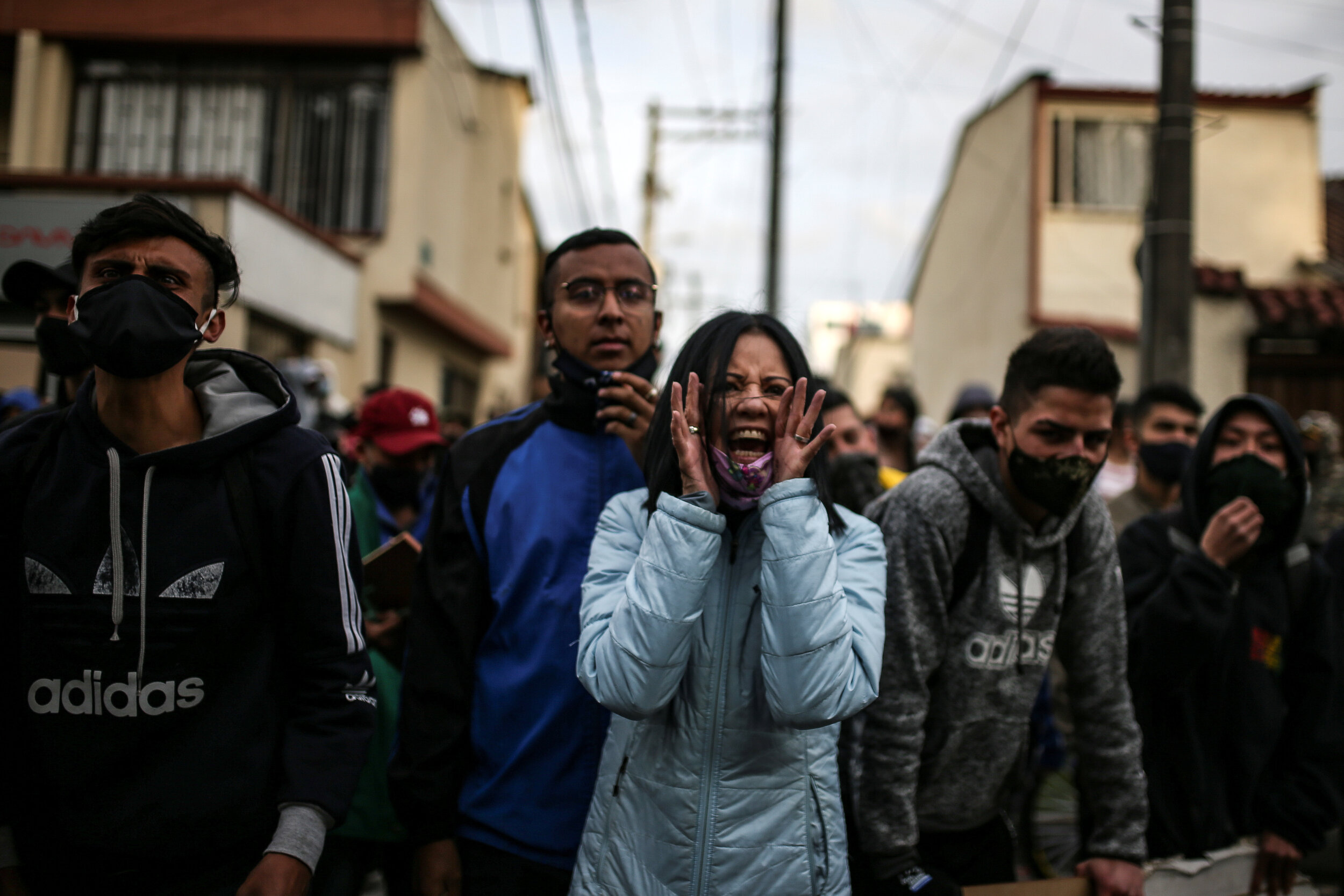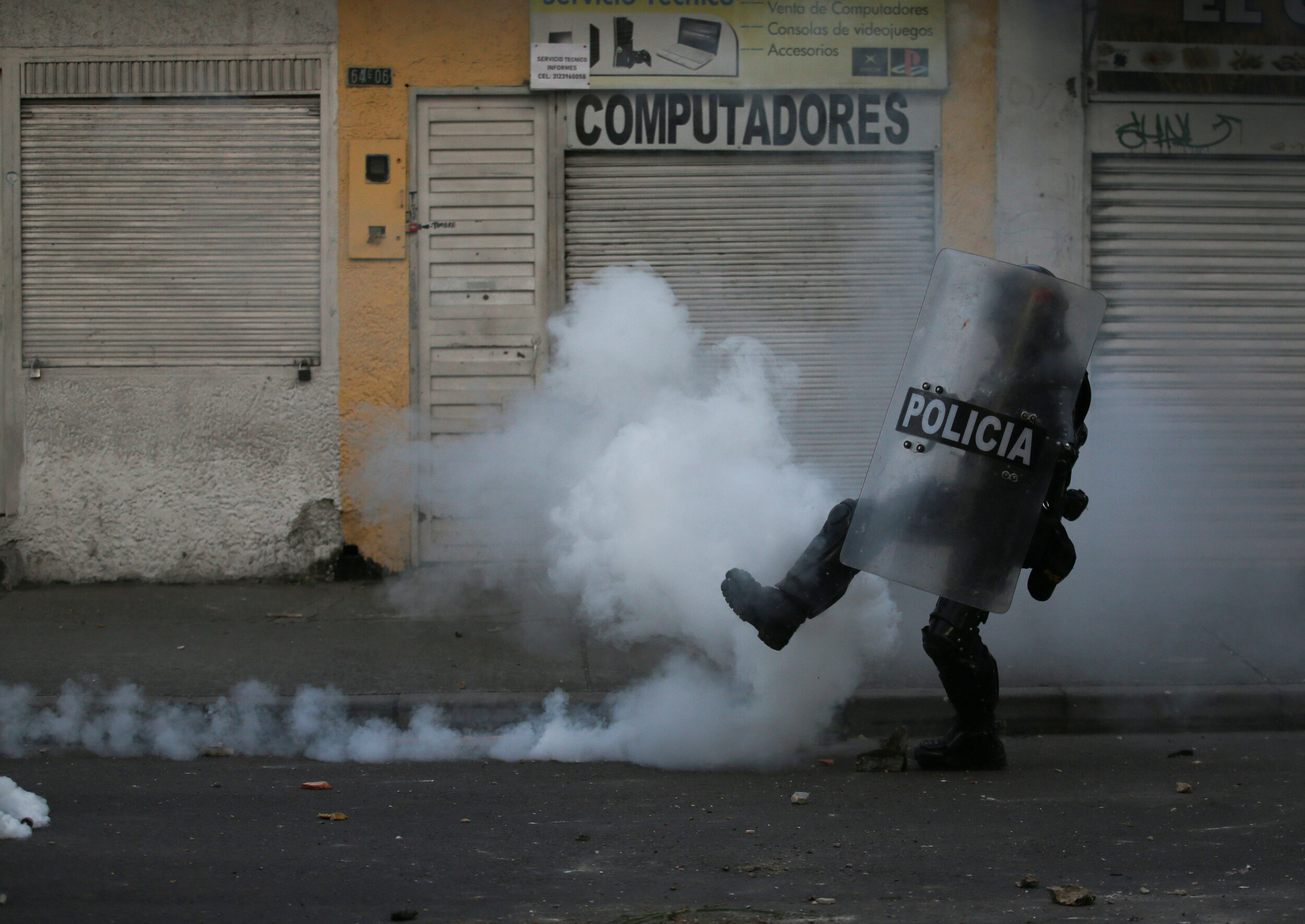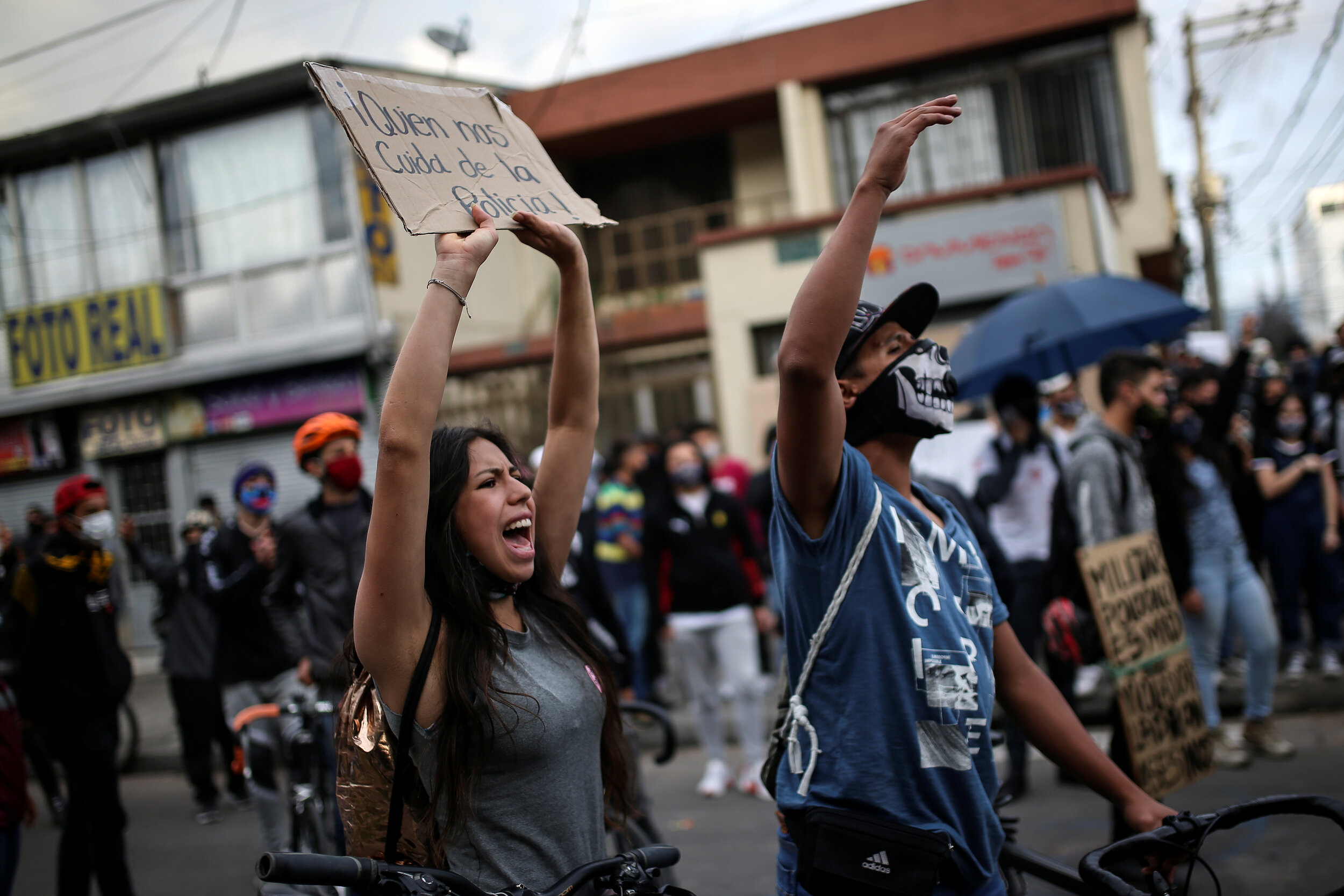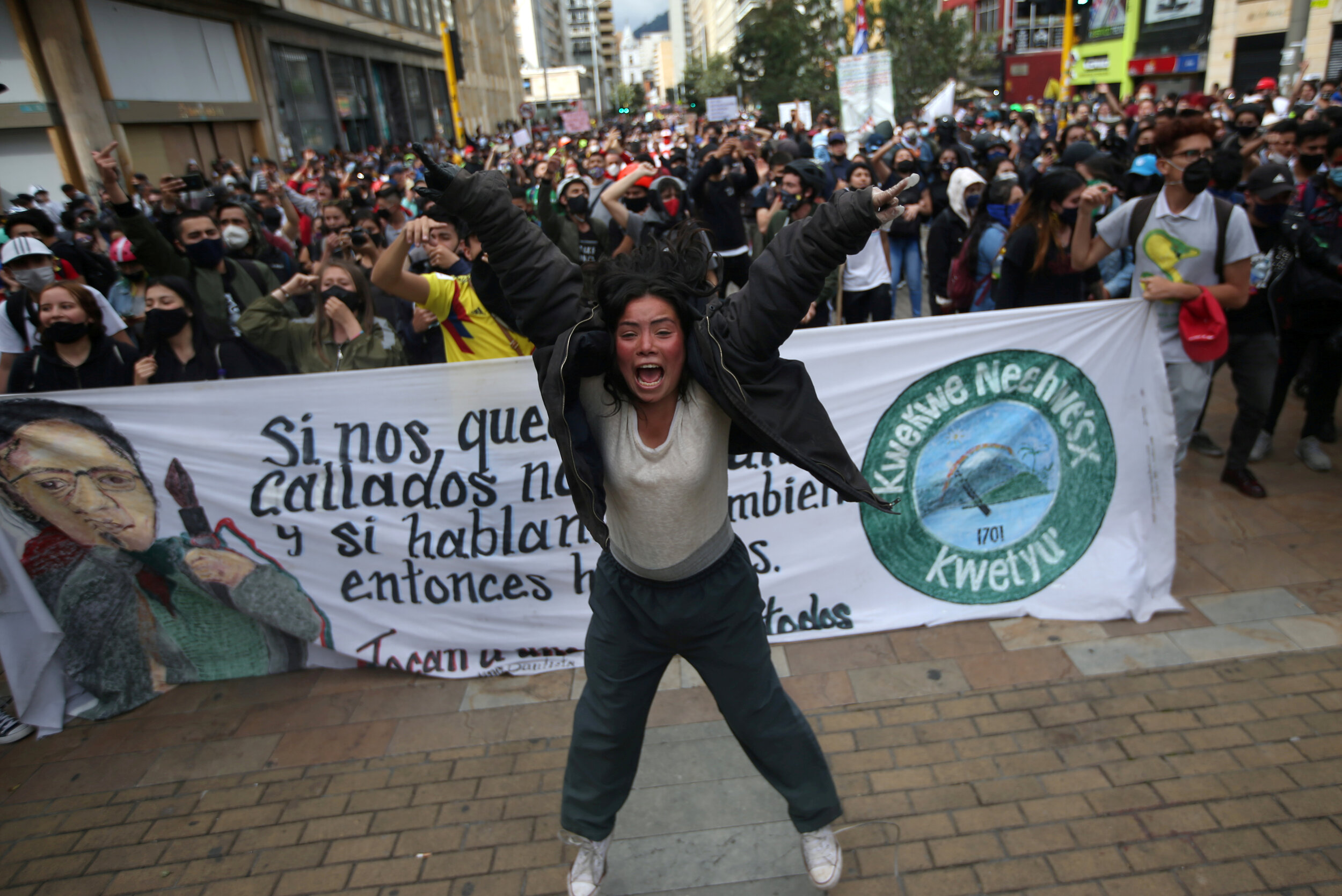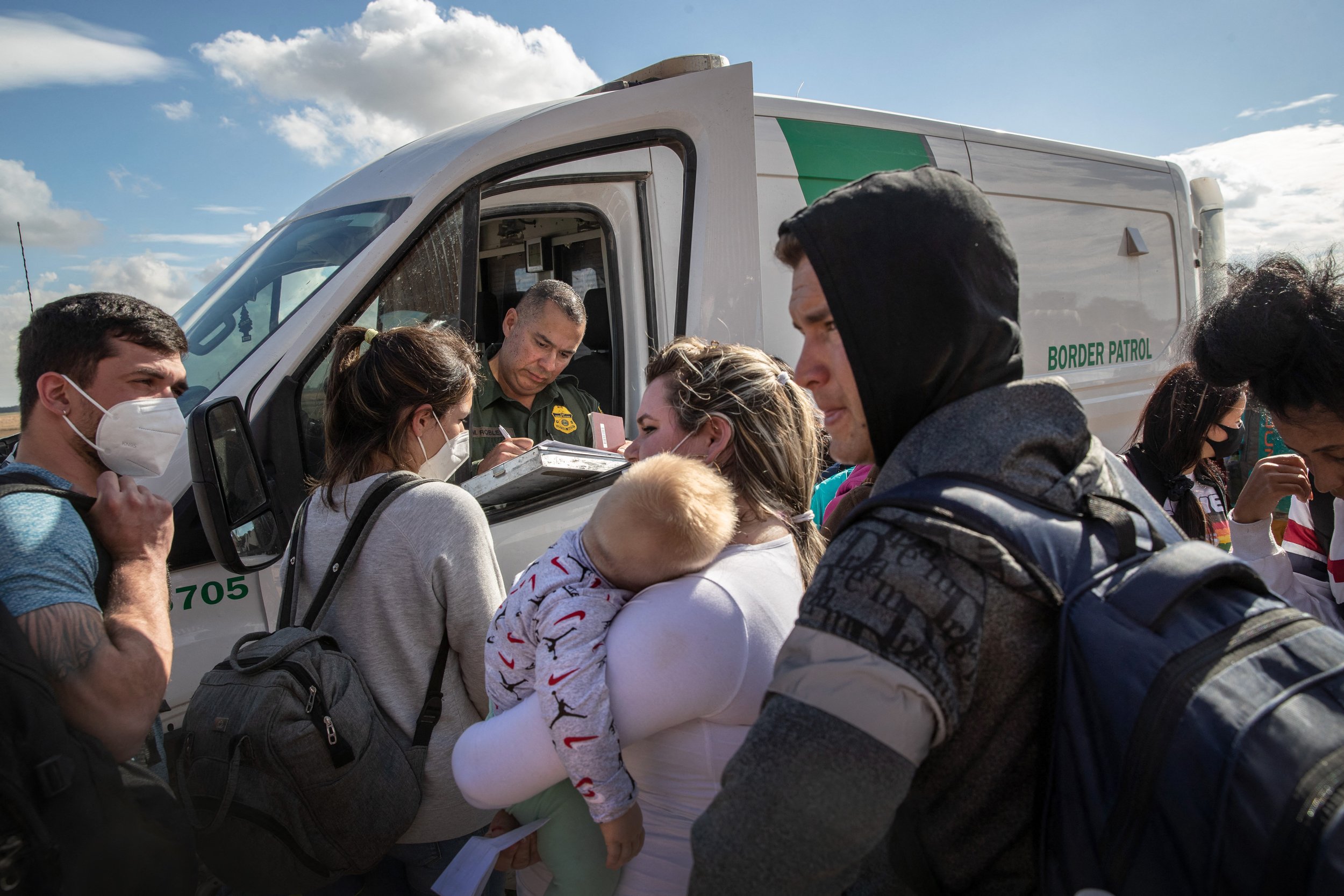Colombians are Fighting Police Brutality, and Paying with Their Lives
“[Police stations] are not really a sign of safety for Colombian citizens. They are places where you feel a lot of fear if you ever are taken inside,” says Emilia Marquez from Colombian human rights organization Temblores, which tracks abuses by police officers.
Protests against police brutality have increased since the death in custody of Javier Ordoñez on Sept. 9. At least 14 people were killed as police responded with deadly force to those protests, according to Temblores. But the violence didn’t start in September. Since the coronavirus pandemic began, Temblores has recorded at least 266 cases reported through the media of physical violence or homicide committed by police officers.
“Police brutality and abuse of power has become greater since the pandemic because the police has been given a lot of power to regulate the new social rules that come with this pandemic,” says Marquez. Those powers include enforcing social distancing rules and restrictions on the sale of alcohol.
Javier Ordóñez, a father of two who was one exam away from becoming a lawyer, had been drinking with friends in his apartment in Bogotá when, around midnight, they left to buy more drinks, Ordóñez’s sister-in-law told the New York Times.
It’s illegal to sell alcohol after 9 p.m. under Colombia’s strict lockdown laws. Ordóñez’s friends said that as they returned home, police officers approached and told them they would be fined for breaking social distancing rules and drinking in the street.
Officers pinned Ordóñez to the ground and tasered him 12 times, according to his sister-in-law, even though he was restrained and crying out “I’m choking,” and “enough please, enough, no more, please.”
Police took Ordóñez and his friends to a neighborhood police station, known as a CAI.
Ordóñez’s friend Juan David Uribe told Reuters TV: "When I arrived [at the station], my friend was practically dead — he was not moving. So I began to yell at police and told them, 'Please help him, let's take him to the hospital.'"
Ordóñez died at the hospital.
Within hours, thousands of people were in the streets demanding an end to police brutality. The police reacted with more brutality: They beat protesters, fired tear gas, and used so-called “less lethal” weapons. In the nights of violence that followed, at least 13 people were killed.
Bogotá‘s mayor, Claudia López, said some officers had used their firearms indiscriminately and called for them to be fired.
While the initial protest had concentrated demonstrators in the area where Ordóñez was killed, protesters now began demonstrating outside their local CAI community police stations, chanting “murderers.” Some threw paintballs and graffitied the walls. Others set fire to the CAIs.
“[People were saying] these are places where there’s so much brutality, that we don’t want them, because this murder that happened inside of that place, this is not something that happened only there,” says Marquez. “In the CAIs, there is no state surveillance, so the police officers have been known to commit atrocities, like from this murder, but there has also been a lot of sexual violence [by police against detainees] inside of these places.”
At an event remembering those killed or injured, 17-year-old Mayra Paez said her husband Jaider Fonseca, who was also 17, was deliberately shot dead by police. “It was not a stray bullet, it was four shots. He was riddled with bullets. They have left a son without the right to know his father, without the right to grow up with him. I also want you to bear in mind that my son is orphaned by this violent act of the National Police.”
Many of the victims were under 30, and some were teenagers. López called the killings “a massacre of our young people.”
López tweeted that the police had “disobeyed [her] direct and public instructions” not to shoot at protesters.
“Policemen started going out with their guns, and this is something that police cannot do. When you have a protest, which is what was happening, police can never use their firearms,” says Marquez. “That’s why there is all of this regulation around ‘reduced-lethality weapons’ that police can use in these cases, which is for example, gas pipes, rubber [bullets]. But in this case, they started pulling out firearms, real guns, and they started shooting the people who were there.”
“This is very worrying because it shows they don’t respect [Mayor López] as a leader,” says Marquez. “If police can’t even follow their supposed direct boss, which is the mayor, what this shows us is that it’s an institution that is in urgent need of reform.”
Marquez fears the police tactics harken back to the dirty wars of the 1980s that pitted leftist guerrillas, right-wing paramilitaries and narco gangs against one another with various degrees of state cooperation. “We have actual videos of policemen giving firearms to citizens, to people dressed as civilians, and we don’t know who these people are,” she says.
“This is very worrying, especially in a country like Colombia. The result of this is about 70 people who are severely injured by bullets.”
“There should be total prohibition of firearms in the city police teams,” says Marquez. “The police should be a civilian-controlled body, and not where it is right now, which is the minister of defense which is a war ministry.”
Three days after Ordóñez was killed, the defense minister apologized. The police version of events is that officers were responding to a dispute between a group of people who had been drinking and needed to be subdued once they became aggressive. Witnesses and Ordóñez’s family dispute that account.
Two police officers have been fired and charged with torture and aggravated homicide. Five others have been suspended.


